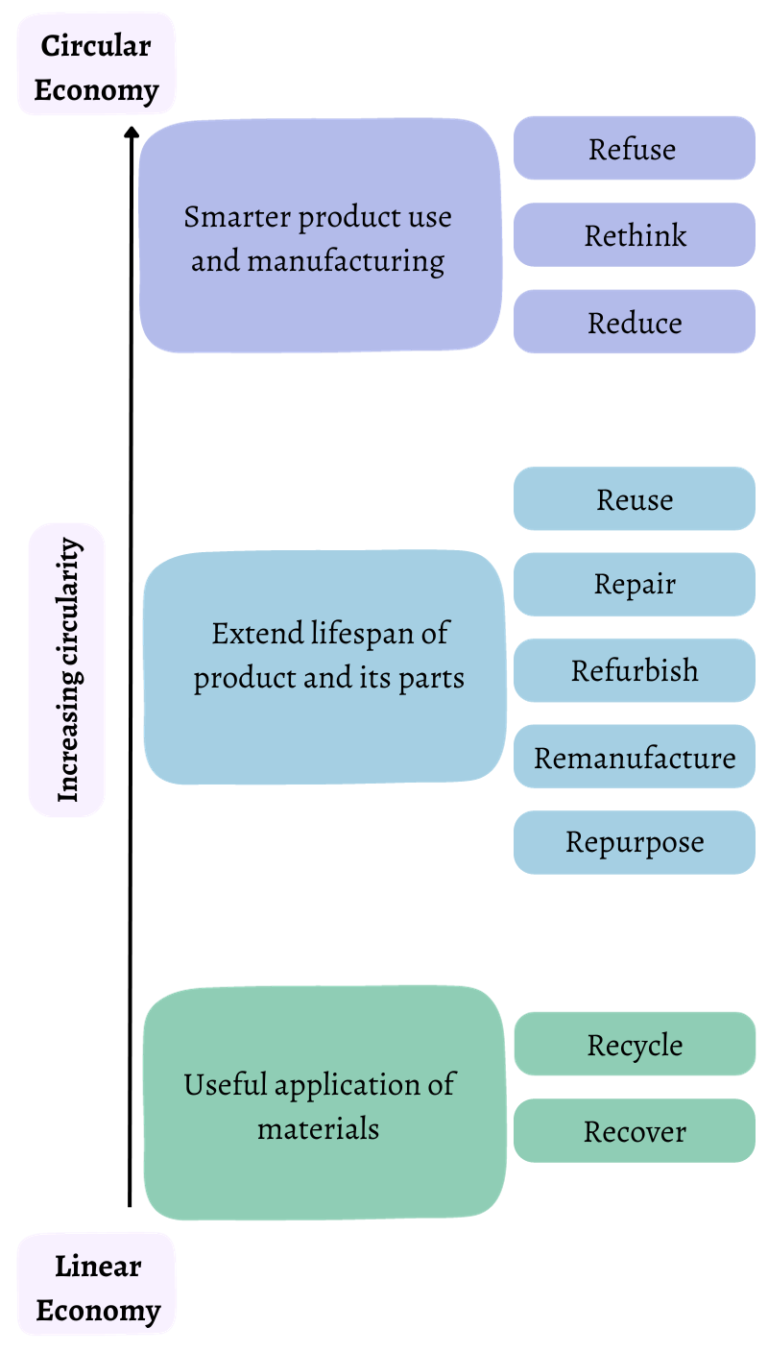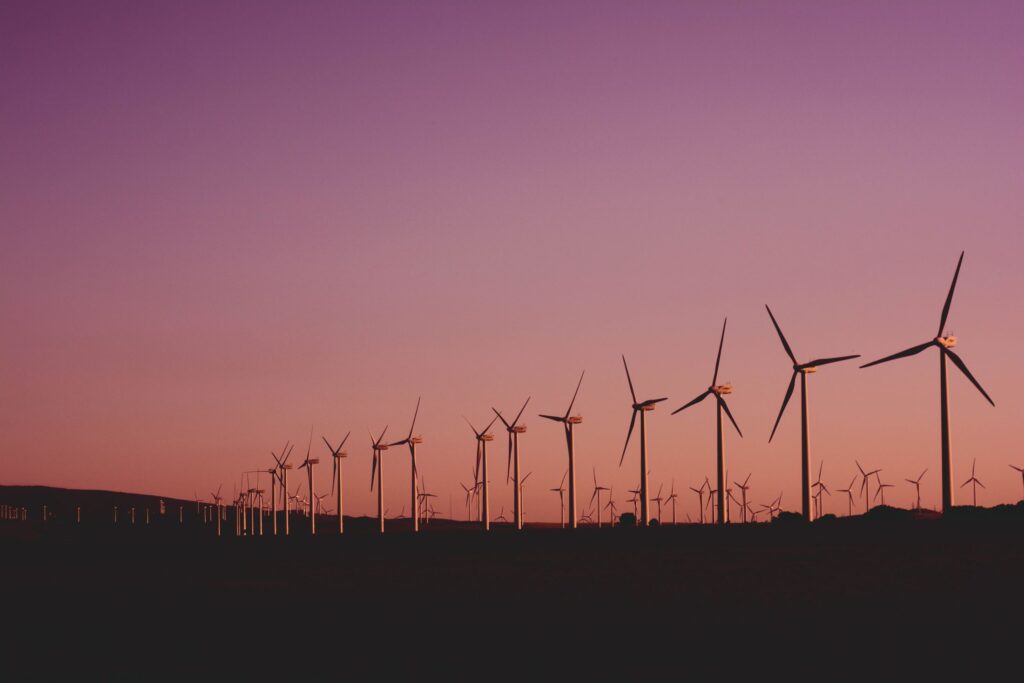We live in a system of production and consumption. Because of this, we depend on our ability to produce and consume at the same rate. All living things produce and consume to some degree, but what happens when resources aren’t limitless? Although producing things can foster economic growth, creativity, and individualism, as things stand now, we do not have the means to produce and consume indefinitely.
How our man-made system operates is unsustainable. We’ve backed ourselves into a corner because our environment doesn’t allow us to produce and consume without regard forever. That is, we’ve trapped ourselves in a system that society as a whole relies on, yet we can’t sustain. To have a truly thriving society, that is to maintain intergenerational social, economic, and environmental performance, we need balance.
We’re told to spend and consume without consideration, but that's the problem.
We live in a linear economy, a system not designed for longevity. A linear system is open-ended, and in our case, that means an indefinite cycle of resource use and waste. A linear economy turns natural resources into base materials and products for sale through a series of value-adding steps. But, at the point of sale, ownership and liability caused by product use and consumption passes to the buyer. The buyer ultimately decides what becomes of those consumer goods, if they’ll be reused, recycled, or discarded.
A linear economy is, therefore, driven by upselling. New things come with a “bigger and better” mentality as we’re sold ideas of progress, emotion, and opulence. But, in reality, companies are just selling high volumes of cheap goods. Long-term use of things is seen as undesirable and not resourceful. This type of system is abusive and extractive.
A linear system operates under the assumption that our planet has limitless resources, but it doesn’t. A linear economy is largely to blame for creating our waste and pollution problems. Most products are designed to be thrown out and “upgraded” because of perceived obsolescence. There’s no intention behind resource use beyond getting the buyer to purchase the product. Unfortunately, we have to now deal with the consequences of such behavior and thinking.
But, even with climate issues becoming more pressing and frequently discussed, we’re only given the illusion of sustainability to quell fears without actual change. Corporations have taken to greenwashing, false promises, and manipulation so things can continue to operate per the status quo.
A linear economy does us no favors.
A sustainable society requires secure social, economic, and environmental conditions. But, a linear system doesn’t provide the means for any of those. Due to the climate issues we’re facing, the impact of how we use our environment cannot be ignored.
Societal expectations aren’t met as unemployment, poor working conditions, poverty, and generational inequity continue to run rampant. Economic conditions cannot be maintained either as we face supply risks, problematic ownership structures, deregulated markets, and flawed incentive structures.
Furthermore, the overconsumption of resources and goods in this system has thrown us into tumultuous environmental conditions. Globally, natural resource extraction and use continue to accelerate despite a shocking 45% of emissions coming from the production of the cars, clothes, food, and other products we use every day.
Human development, industry, and ingenuity are in a period of carelessness thanks to the “take-make-use-waste” mentality that’s become commonplace. Consequently, things like famine, extreme weather, and extinction events are on the rise. A linear system only creates social, economic, and environmental instability which cannot ease sustainability concerns.
A circular economy is intertwined with sustainable development.
We simply cannot continue putting into a linear system. Our social, economic, and environmental health are in dire straights. We need green development and a green economy, but a circular economy is a practical step towards that. A circular economy is a way we can implement sustainable development by harnessing restoration and regeneration through intention and design.
Unlike a linear economy, a circular system is regenerative by slowing, closing, and narrowing material and energy loops. However, according to researchers’ opinions, much policy seems to be oriented toward promoting recycling which is not enough. We need a well-rounded and thorough shift.
Despite that, a circular economy focuses on reducing resource extraction and waste generation while still allowing for economic growth and prosperity. The focus is on the whole picture, not just the bottom line. The system then becomes closed instead of being left open-ended.
Reprocessing goods and materials would help the economy and save energy while reducing resource consumption and waste. That’s because a circular system takes into consideration ecological ideas and systems without restricting economic growth and societal prosperity.
Within a circular system, efforts are shifted inward. A circular economy separates growth from resource consumption by designing products to be reused, recycled, or repurposed. An efficient economy is created as a result, without spreading harmful pollutants and practices.

Source: Adapted from Kirchherr et al. (2017, pg. 4)
A circular economy would foster sustainability.
Since this type of system is more focused on restoration and regeneration it maximizes value at each step of a product’s life. Materials are assets to be preserved not commodities to be consumed. Labor also becomes more valued than resource consumption which would create more job opportunities for people worldwide.
Within a circular system, a waste hierarchy is created. The focus is first on reuse and repair, but if those aren’t possible then it goes to recycling and recovery so resources aren’t abused or overextended.
Applying circular economic strategies in just five areas (cement, aluminum, steel, plastics, and food) can eliminate almost half of the emissions from the production of goods. The results would be equivalent to cutting current emissions from all transport to zero (aka 9.3 billion tons of CO2 emissions by 2050!).
A circular economy also has the potential to not only reduce emissions and resource use but to increase resilience to the physical effects of climate change. For example, in the food system, regenerative practices would improve the health of the soil which then increases its capacity to absorb and retain water, leading to increased durability against both intense rainfall and drought.
In the end, a circular economy isn’t as ambiguous as just striving for sustainability. A circular system integrates non-economic aspects into development which we should have been doing all along! A linear economy focuses on the bottom line of profit, but thanks to our careless consumption habits degrading our environment to the capacity that we have, we can’t afford to work in that same way.
A closed system can ease sustainability concerns.
Although research and innovation are crucial to making a full shift, gradual implementation is also needed for easy and long-term change. The goal remains the same though, discarding the unsustainable linear system in favor of a closed system.
We must balance output and our needs without forsaking the environment. We’re already seeing successful implementation of more circular mindsets, like Germany’s “Closed Substance Cycle and Waste Management Act” and Japan’s “Basic Law for Establishing a Recycling-Based Society”. It’s possible and now is the time to make these big changes, before it’s too late.
It's time for a holistic approach, mindful consumption, and a supply line that isn’t meant for landfill.
The three dimensions of sustainability are environmental quality, economic prosperity, and social equity. Therefore, we need to utilize holistic approaches to address all aspects of sustainability. One aspect of achieving that is a circular economy.
It’s true the responsibility of change when switching to a circular economy lies with policymakers, businesses, and regulators. But that doesn’t mean individuals shouldn’t be involved in creating this change. After all, sustainable development requires a collaborative effort and a reexamination of values.
We need to be more conscious of purchasing habits, support companies dedicated to true sustainability, and simply consume less. We can no longer afford to be concerned with just the short term. Instead, we need to focus on long-term adaptability, resourcefulness, and behaviors from a sustainable context to ensure we don’t go down the wrong path again. We’ll never be perfect, but we still need to act.

